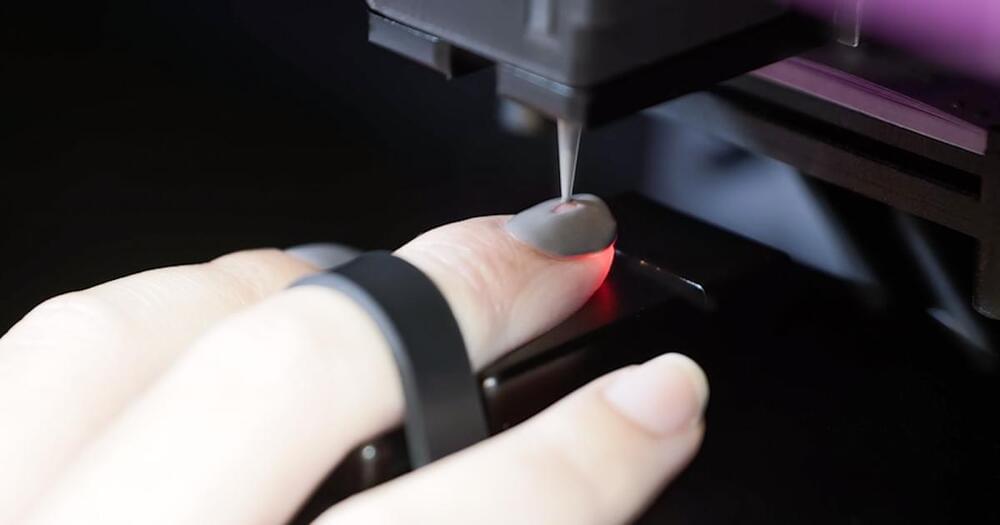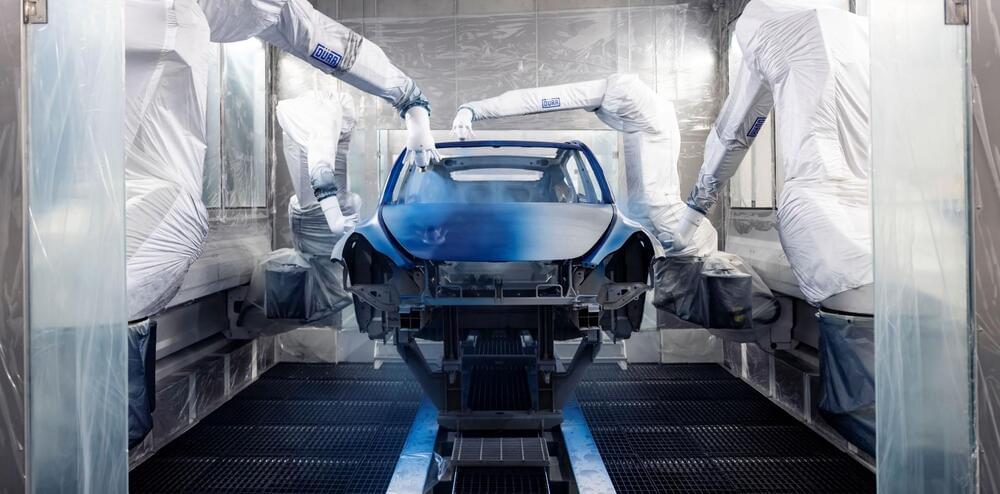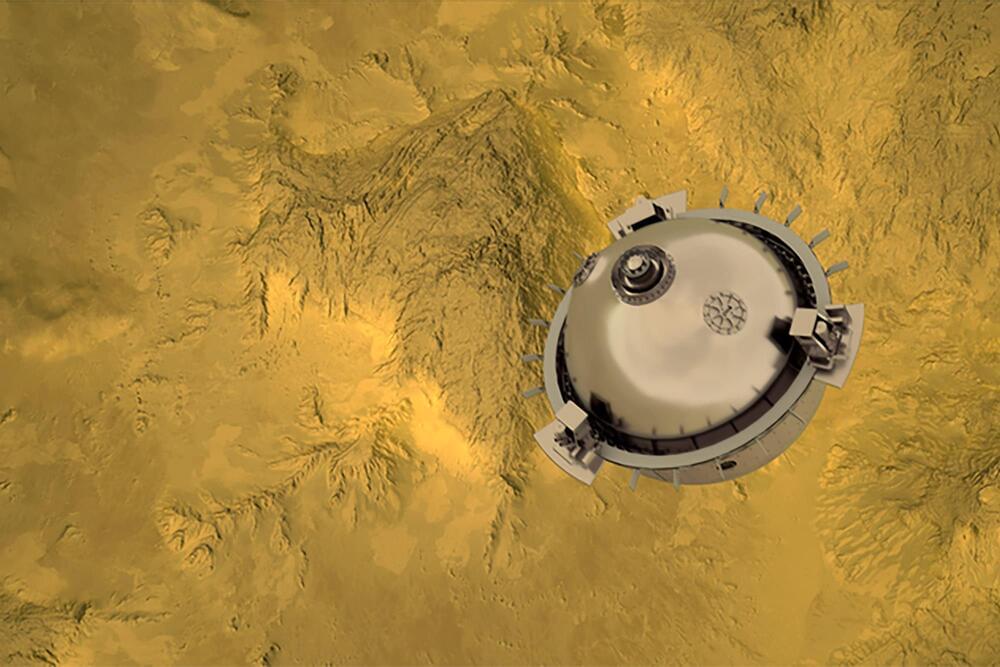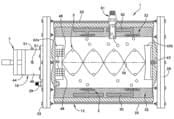My name is Roman Stolyarov, and for my PhD work at the Media Lab I developed a terrain-adaptive control system for robotic leg prostheses. While modern prostheses allow people with leg amputations to get around, the way that they get around is often tiring, uncomfortable, and burdensome on their intact joints. In the worst case, irregular terrain geometries—from uneven sidewalks to rugged hiking trails—can be difficult or impossible to navigate with conventional prostheses, burdening the user’s mobility, independence, and sense of being able-bodied. My work was intended to help people with amputations feel as able-bodied and mobile as possible, by allowing them to walk seamlessly regardless of the ground terrain.
Page 3312
Oct 23, 2022
Unexpected Behavior of Hybrid Matter–Antimatter Atoms in Superfluid Helium Surprises Physicists at CERN
Posted by Quinn Sena in category: particle physics
Atom containing an antiproton, the proton’s antimatter equivalent, in place of an electron has an unexpected response to laser light when immersed in superfluid helium, reports the ASACUSA collaboration at CERN
Established in 1954 and headquartered in Geneva, Switzerland, CERN is a European research organization that operates the Large Hadron Collider, the largest particle physics laboratory in the world. Its full name is the European Organization for Nuclear Research (French: Organisation européenne pour la recherche nucléaire) and the CERN acronym comes from the French Conseil Européen pour la Recherche Nucléaire.
Oct 23, 2022
GitHub Copilot: The Latest in the List of AI Generative Models Facing Copyright Allegations
Posted by Jose Ruben Rodriguez Fuentes in category: robotics/AI
GitHub Copilot, the text-to-code AI tool, has been—for the most part—revolutionary in determining how people code. Twitter has been erupting with people expressing how this new AI tool has benefitted them with organisation heads and developers alike hailing it for saving much of their time.
However, the latest discussion surrounding it suggests that things are murky.
Oct 23, 2022
Target is now offering the world’s first “robot manicure”
Posted by Raphael Ramos in category: robotics/AI

A robot that uses AI and 3D cameras to paint fingernails is now giving Target customers 10-minute manicures for just $8.
Oct 22, 2022
New Tesla Colors are coming to the U.S.
Posted by Genevieve Klien in category: futurism
Tesla has even more colors in the works, and these colors will be coming to the United States, unlike Quicksilver and Midnight Cherry Red.
Oct 22, 2022
Particle Physics Pushing Cancer Treatment Boundaries
Posted by Genevieve Klien in category: biotech/medical
Researchers at Europe’s science lab CERN, who regularly use particle physics to challenge our understanding of the universe, are also applying their craft to upend the limits to cancer treatment.
The physicists here are working with giant particle accelerators in search of ways to expand the reach of cancer radiation therapy, and take on hard-to-reach tumours that would otherwise have been fatal.
In one CERN lab, called CLEAR, facility coordinator Roberto Corsini stands next to a large, linear particle accelerator consisting of a 40-metre metal beam with tubes packed in aluminium foil at one end, and a vast array of measurement instruments and protruding colourful wires and cables.
Oct 22, 2022
NASA plan for an instrument to withstand conditions of Venus
Posted by Genevieve Klien in category: space
Within the next decade, NASA’s DAVINCI mission plans to send a descent sphere whistling through the atmosphere of Venus, collecting not only samples of its atmosphere but also high-resolution images of the planet’s surface. But Venus is a deeply inhospitable place, with surface temperatures hotter than an oven and pressure so great it is like being 900 meters underwater. Now, NASA has shared more details about one of the DAVINCI mission’s instruments and how it will collect vital data in this most challenging of environments.
DAVINCI’s VASI instrument (Venus Atmospheric Structure Investigation) will be responsible for taking readings of the atmosphere as the descent sphere drops through the atmosphere on its 63-minute-long fall to the surface, including collecting data on temperature, pressure, wind speed and direction. This should help answer some long-open questions about the planet’s atmosphere, particularly its lower atmosphere, which remains a mystery in many ways.
“There are actually some big puzzles about the deep atmosphere of Venus,” said the science lead for the VASI instrument, Ralph Lorenz of the Johns Hopkins Applied Physics Laboratory, in a statement. “We don’t have all the pieces of that puzzle and DAVINCI will give us those pieces by measuring the composition at the same time as the pressure and temperature as we get near the surface.”
Oct 22, 2022
Before and after: See how the Mississippi River and its tributaries have dropped to record lows
Posted by Quinn Sena in category: futurism
The expanding drought in the Central US has taken a severe toll on the Mississippi and the rivers that flow into it.
Oct 22, 2022
2.5 billion years ago, ancient Earth had way shorter days and bigger Full Moons
Posted by Atanas Atanasov in category: space travel
Early Earth was quite the place.
For the first time, astronomers have been able to estimate the length of the day and the distance to the Moon as it was almost two and a half billion years ago.
Oct 22, 2022
US7709819B2 — Apparatus and method for long-term storage of antimatter
Posted by Quinn Sena in categories: particle physics, robotics/AI
A long-term antimatter storage device that may be energized by a low power magnetron and can function autonomously for hundreds of hours on the energy provided by batteries. An evacuated, cryogenic container is arranged with a source of positrons and a source of electrons positioned in capture relation to one another within the container so as to allow for the formation of a plurality of positronium atoms. A microwave resonator is located within the container forming a circularly polarized standing wave within which the plurality of positronium atoms rotate. Radioactive sources for small stores and low energy positron accelerators for large stores are used to efficiently fill the device with positronium in seconds to minutes. The device may also be arranged to provide for the extraction of positrons. A method for storing antimatter is also provided.

















